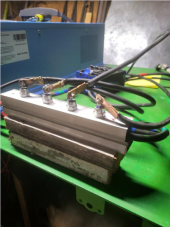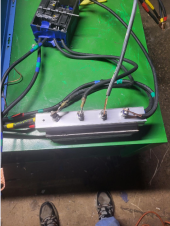To those more knowledgeable than myself, I have a question.
I have 4 Blocking Diodes, mounted to 1 heat sink.
4 holes drilled into 1 single 2" piece of Aluminum square tubing.
That way my "in" is at the top and the "out" comes from inside the tubing.
My question is this, since the flow is out from all 4 wired touching the same piece of alunimum,
will they short out?
if so I can cut them apart, if not, I'll leave it like it is.
Thank you.
skip
I have 4 Blocking Diodes, mounted to 1 heat sink.
4 holes drilled into 1 single 2" piece of Aluminum square tubing.
That way my "in" is at the top and the "out" comes from inside the tubing.
My question is this, since the flow is out from all 4 wired touching the same piece of alunimum,
will they short out?
if so I can cut them apart, if not, I'll leave it like it is.
Thank you.
skip




